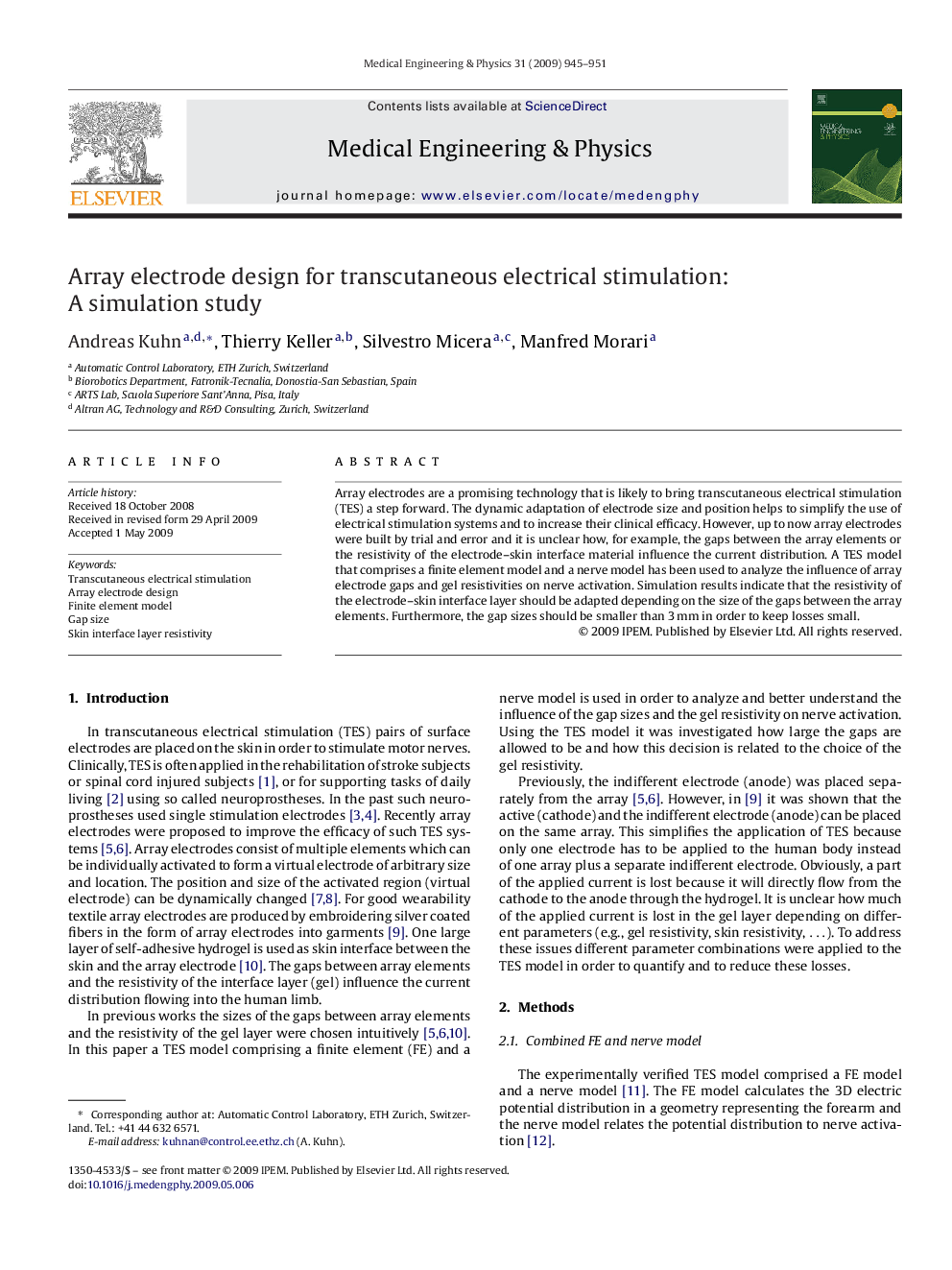| Article ID | Journal | Published Year | Pages | File Type |
|---|---|---|---|---|
| 876897 | Medical Engineering & Physics | 2009 | 7 Pages |
Array electrodes are a promising technology that is likely to bring transcutaneous electrical stimulation (TES) a step forward. The dynamic adaptation of electrode size and position helps to simplify the use of electrical stimulation systems and to increase their clinical efficacy. However, up to now array electrodes were built by trial and error and it is unclear how, for example, the gaps between the array elements or the resistivity of the electrode–skin interface material influence the current distribution. A TES model that comprises a finite element model and a nerve model has been used to analyze the influence of array electrode gaps and gel resistivities on nerve activation. Simulation results indicate that the resistivity of the electrode–skin interface layer should be adapted depending on the size of the gaps between the array elements. Furthermore, the gap sizes should be smaller than 3 mm in order to keep losses small.
